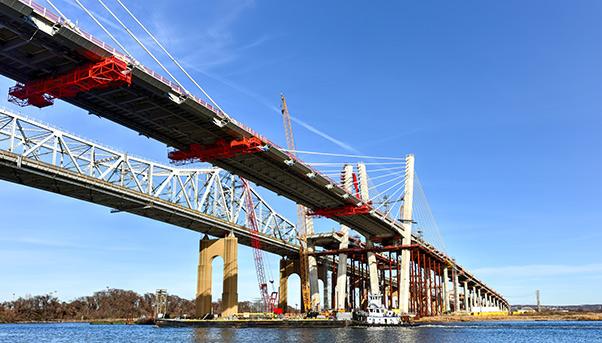
he train leaves Grand Central Station in Manhattan for Poughkeepsie, New York, on time at 10:43 a.m. It begins the slow journey along the Hudson River in the valley of the same name towards the upper reaches of the state where the hills start to roll through the countryside. Although the passenger carriage is spacious and comfortable, it is old. There is no electric plug to charge the smartphone and Wi-Fi service is not available. First stop: Tarrytown. But not before a sudden 10-minute halt to the journey. And then an unscheduled stop at 125th Street in Harlem. When the train starts up again, it takes its time since its engine runs on diesel and not electricity. As a final reminder of the country’s desperate need for modern infrastructure and transportation services, the train takes more than an hour and a half to do a little more than 70 kilometres.
But something is changing. During the journey, which offers panoramic vistas for tourists while innerving harried commuters with its slow pace, a gigantic structure appears near Tarrytown: the Tappan Zee Bridge, named after the New York state governor when it was inaugurated it in 1955. It is a colossal piece of infrastructure, stretching five kilometres across the Hudson River, whose width at this point makes it seem like a lake. Then there are scores of barges, cranes, cables and pilons at an adjacent construction site where a new bridge is rising to replace it.
The Tappan Zee handles the passage of 140,000 vehicles every day, giving it one of the highest traffic accident rates in the state because of its outdated design. It is in such a state that the cost of maintaining it for the next decade would be greater than that of building a new bridge.
The new two-span cable-stayed bridge, named after the late Governor Mario M. Cuomo, will have eight lanes and others for cyclists and pedestrians.
Partly opened since the summer, it is one of the biggest projects in the state, which plans to spend about $100 billion in infrastructure during the next five years. Although it is the biggest state budget in the United States, it is not because of the largesse of Andrew Cuomo, the state governor and son of Mario: it is out of necessity.
«These investments are enabling New York to rebuild and modernize its roads, bridges, broadband networks, public buildings, and other critical infrastructure across the State while putting thousands of people to work,» reads the latest executive budget briefing book by the state government.
In its 2015 report card, which the American Society of Civil Engineers (ASCE) publishes every two years to much attention, emphasised the need to renovate by assigning the state a C- grade for the quality of its infrastructure, which it indicated as everything from bridges to dams to roads.
«New York’s infrastructure includes many significant assets which are aging. Keeping up with maintenance and modernizing them for the future is an ongoing challenge,» it said.
Some of its projects being pursued by the state government figure on a priority list known as Emergency & National Security Projects drafted by U.S. President Donald Trump. One of them is the extension to Harlem of the Second Avenue Subway, a new metro line opened on the east side of Manhattan at the beginning of the year.
There is also the Gateway Program, to which the state is contributing to replace and upgrade rail infrastructure between Newark, New Jersey and Pennsylvania Station in Manhattan. It also involves expanding track, tunnel, bridge and station capacity, some of it more than 100 years old. Pennsylvania Station is the most trafficked in the country because it receives all the commuter trains from the states of Pennsylvania and New Jersey.
The state is looking at building a new line for high-speed trains. This would mean excavating a tunnel under the Hudson River from Newark to Manhattan. Newark is a city in New Jersey where an international airport of the same name is located.
Other projects not on the priority list but nevertheless important include the replacement of the Goethals Bridge that links New Jersey with Staten Island, one of the five boroughs of New York City. It is replacing a bridge of the same name that opened in 1928 and was in need of $1.5 billion of repairs and maintenance.
Apart from the Cuomo bridge, another replacement project is the UnionPort Bridge in the Bronx, a transit point that connects Manhattan with communities beyond the island. Built in 1953, the structure handles 50,000-60,000 vehicles per day but it is weakened with age. The new one, a $232 million contract awarded to Lane Construction, a U.S. subsidiary of Salini Impregilo, will be built in 10 phases and take 48 months to complete. The challenge will be to keep traffic flowing during construction and leave the waterway open to boats. Work is to begin in late 2017 and be completed by mid-2021.

